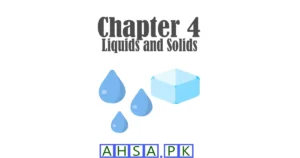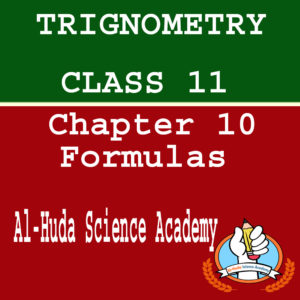The most important Chemistry chapter 6 short questions for Class 11. 1st Year Chapter 6 of Chemistry is related to chemical bonding. These questions are for the Punjab Text Book Board that can be used within all of Punjab where this syllabus is taught.
Students are advised to must prepare these questions in order to perform the best in the board examination.
Chemistry Chapter 6 Short Questions for Class 11
- What is the octet rule? Give two examples of compounds that deviate from it.
- 75.4 pm is the compromised distance between the bonded hydrogen atoms. Justify.
- Define ionic bonds with an example.
- The distinction between covalent and coordinate covalent bond vanishes after bond formation.
- Why the radius of chloride ion increases from 99 pm to 181 pm? OR Why ionic radius is greater than the atomic radius?
- State electronegativity and electron affinity.
- Why is the radius of a cation smaller than its parent atom?
- What is the difference between covalent and coordinated covalent bonds?
- Define coordinate covalent bonds with an example.
- Why the energy of the anti-bonding molecular orbital is higher than the corresponding bonding molecular orbital?
- Why does ionization energy vary in the periodic table?
- Ionization energy is an index to the metallic nature of an element. Justify.
- Define bond order. Calculate the bond order of the hydrogen molecule. OR What is bond order? Give an example.
- Differentiate between atomic orbital and molecular orbital.
- p bonds are more diffused than s bonds. Why?
- Define electronegativity. Give its trend in the periodic table.
- How the nature of a chemical bond is predicted with the help of electronegativity values of two bonded atoms?
- Why is no bond in chemistry 100% ionic?
- The bond angles of H2O and NH3 are not 109.5o like that of CH4 although oxygen and nitrogen atoms are sp3 hybridized. Why?
- State the geometry of ammonia molecule on the basis of VSEPR theory.
- Define dipole moment and give its S.I units.
- Why the abnormality of bond length and bond strength in HI is less prominent than that of HCl?
- Why the dipole moment of CO2 is zero but that of SO2 is 1.61 D?
- Why the dipole moment of SO2 is 1.61D but that of SO3 is zero?
- Why the dipole moment of CO2 is zero but that of CO is 0.12 D?
- Why BF3 is non-polar but SO2 polar?
- How the percentage of ionic character of a covalent bond is determined by dipole moment?
- Why the melting points, boiling points, heats of sublimation, and heats of vaporization of electrovalent compounds are higher as compared to those of covalent compounds?
- Write two points of Valence Bond Theory.
- Why ionization energy decreases down the group although nuclear charge increases? Explain.
- Why it is impossible for CH4 to make a coordinated covalent bond with H+ ions while water and ammonia can do so?
- Why do the lone pairs of electrons occupy more space than bond pairs?
- On what factors strength of the bond depends?
- Why ionic compounds do not show the phenomenon of isomerism but covalent compounds do?
- How the type of bonding affects the solubility of compounds?
- Why is it difficult to measure the correct atomic radius?
- Differentiate between hybrid orbital and molecular orbital.
Find the answers from the Chemistry book of Class 11 Chapter 6
Important Short Questions of Chemistry 1st Year




